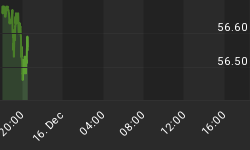QE-Bashing at Jackson Hole
In the words of the always bubbly Marc Faber, "Ben Bernanke is a money printer". We share Mr. Faber's view on "Helicopter Ben", but the winds of change may be blowing due to anti-bubble campaigns from both President Obama and the Federal Reserve.

The recent gathering of central bankers in Jackson Hole did little to sway the market away from a tapering bias. From Reuters:
With all the QE-bashing that went on at the Federal Reserve's Jackson Hole conference this year, it was difficult not to get the sense that, barring a major economic disappointment before its September meeting, the central bank is on track to begin reducing the monthly size of its bond purchase program, or quantitative easing.
Atlanta Fed President Dennis Lockhart, who is not a voter this year but tends to be a bellwether centrist on the Federal Open Market Committee, told Reuters on the sidelines of the meeting that he would be 'comfortable' with a September tapering "providing we don't get any really worrisome signals out of the economy between now and the 18th of September."
Obama Wants Tapering and Larry Summers

We highlighted comments from President Obama last week that referenced the need to avoid what he called "artificial bubbles", which led to the hypothesis the President may be leaning toward Larry Summers to fill Bernanke's chair. The read after the meetings at Jackson Hole was that Summers does indeed have the "inside track". From MarketWatch:
The prevailing view among attendees at the Federal Reserve's annual retreat in Jackson Hole s that Larry Summers has the inside track to replace Fed Chairman Ben Bernanke when he steps down early next year. Jim O'Sullivan, chief economist at High Frequency Economics, said informal discussions with attendees at the meeting led him to conclude that a majority believe President Barack Obama wants to pick Summers, passing over Fed Vice Chair Janet Yellen.
Central Bank Phase Out

Central bankers and leaders from the International Monetary Fund (IMF) communicate and tend to sing from the same hymnal. Just as it is telling that Fed Governors have been specifically discussing tapering for over three months, recent IMF comments acknowledge a "phase out" campaign at the Fed. From Bloomberg:
"We don't think that all central banks will phase out from unconventional monetary policies," International Monetary Fund Managing Director Christine Lagarde told Bloomberg Television's Sara Eisen. "In Europe and Japan there is a lot more to be done."

Investment Implications
This week's investment video takes a little different approach. The first thirteen minutes explain an easy to understand migration strategy for investment portfolios that is similar to adjusting to changing weather conditions. If you are experienced in the markets, you may wish to focus on the second half of the video (13:00), which provides analysis of the present day, including risk-on vs. risk off comparisons.
As noted in the video, we are in a "fence sitting" or flexible allocation stance due to the uncertainties related to Fed policy and Bernanke's lame duck status. We have raised cash over the past few weeks, which acknowledges the tentative state of the bull's reign. The cash helps dilute some of the risks associated with our broad market (SPY), and sector specific holdings, such as small caps (IWM) and technology (QQQ). As long as the S&P 500 remains inside the pink triangle below, we will err on the side of the "do nothing" alternative. A push above 1685 would bring us closer to redeploying cash.

















